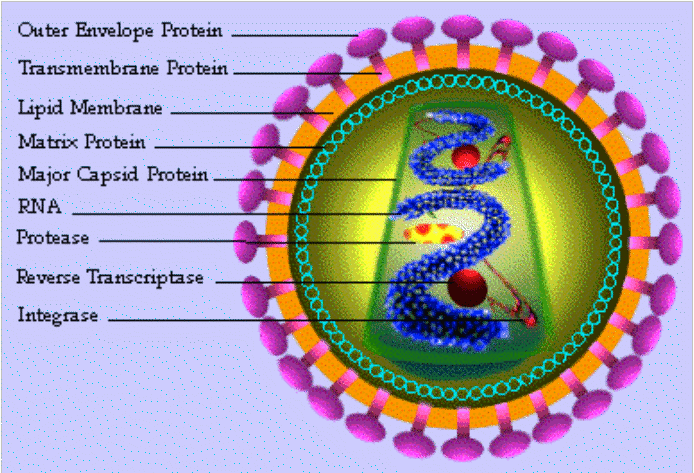Protein shakes, protein receptors, protein markers, protein signals and protein enzymes - it seems there's nothing you can't do with a protein! Well scientists have been synthesizing chemical proteins for a little while now and the latest off the production line is an anti-HIV protein mimic. This week scientists from the University of Wisconsin Madison reported in the journal PNAS that they've engineered a molecule that is close enough to the appearance of a natural protein that it can fool and stop biological processes such as cell communication.
 Well viruses communicate using proteins - anything from HIV to ebola, influenza and herpes. Virus cells need to chat to their host cells in order to infect them. So if you can build a sort of night club bouncer for these proteins then you potentially stop the virus from spreading. And it seems you need protein to fight protein to do this.
Well viruses communicate using proteins - anything from HIV to ebola, influenza and herpes. Virus cells need to chat to their host cells in order to infect them. So if you can build a sort of night club bouncer for these proteins then you potentially stop the virus from spreading. And it seems you need protein to fight protein to do this.
Samuel Gellman and his team built some of these molecules so that they resembled proteins by giving them peptide bonds. So they tested the protein bouncer by adding it to human cells in the laboratory and exposing those cells to HIV. These protein mimics actually seemed to block the proteins produced by the HIV, thereby preventing infection of the human cells. The thing that's extra special about these protein mimics is that the scientists can manipulate their shape.
Well ordinary proteins will eventually be broken down by an enzyme that happens to be floating past but the proteins these researchers have manufactured are an unusual shape that most enzymes simply won't recognise or know what to do with. Another advantage of these protein mimics is that they are much bigger than drug molecules and this makes them much more effective in blocking other protein interactions.
The researchers don't know if this can be safely used in people yet so there's no guarantee this will be prescribed any time soon. What it does mean is they've opened quite an exciting new avenue for research where scientists can actually control the shape of the proteins they synthesize.










Comments
Add a comment